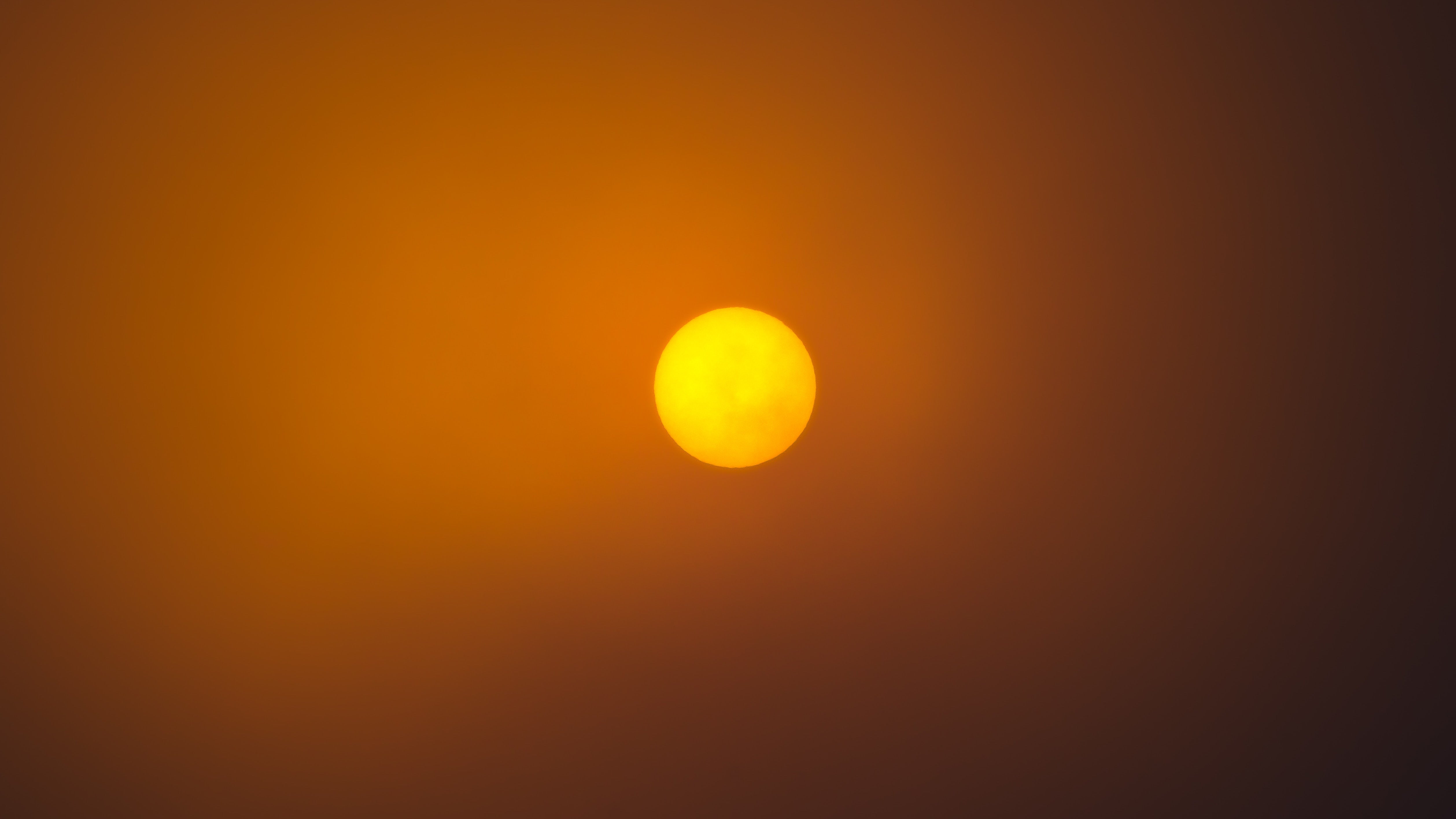
After a record-breaking summer of global weather catastrophes, climate change is a hot topic. But while many look skyward in despair, some astronomers do so with hope. They see the L1 Lagrange point — a distant spot between Earth and the Sun where gravity is perfectly balanced — as a potential ally in fighting climate change.
Two recent papers propose using L1, about 1 million miles (1.6 million kilometers) from Earth, to reduce global warming. Both proposals, although completely theoretical, are space-based ideas for what is called solar geoengineering, a family of technologies that would artificially limit how much the Sun heats our planet. One paper proposes a giant sail in space while the other uses lunar dust, but both depend on a gravitational balancing act to hold shielding in place.
The concept of geoengineering has long been controversial, and solutions involving spaceborne hardware are especially grandiose. Critics say space-based geoengineering is a distraction from reducing carbon emissions and won’t be technologically feasible for many years — too long to wait for climate action. But space-based solutions also carry several advantages compared to Earth-based geoengineering proposals, at least in principle. And as drought, wildfires, and floods ravage regions around the world, some scientists are more willing to consider the premise.
István Szapudi of the University of Hawai’I in Honolulu and author of one of the papers, says that radical solutions are needed. Just one week after his paper published in late July, a tragic wildfire tore through West Maui and obliterated the town of Lahaina.
“These are the extreme things climate scientists keep warning us will happen that are otherwise very unlikely,” says Szapudi. “Lahaina strengthens my resolve to continue with this research and try to contribute however I can toward a solution.”
Flashing a shield
Szapudi’s solution involves an asteroid, space tethers, and a huge graphene sail. The asteroid would be positioned closer to the Sun than the L1 point and tied across a vast distance to the shield, which would be positioned closer to Earth, on the other side of L1.
The tug-of-war between the two — the asteroid falling toward the Sun and the sail being pushed toward Earth by solar winds — would balance and hold the pair between Earth and the Sun. Szapudi’s paper notes that the closer to Earth the shield sits, the smaller it needs to be, since its shadow would become larger. That would allow for a lighter payload, but require longer tethers stretching between asteroid and shield.
The paper was published July 31 in Proceedings of the National Academy of Sciences.

As a purely conceptual paper, Szapudi’s equations do not specify the surface area of the shield nor the mass of the asteroid, but his other numbers are daunting.
He proposes various tethers, as long as 1 million miles (1.6 million km), four times the distance between Earth and the Moon, and a shield-tether payload of 35,000 tons. Since the heaviest lift rocket available, SpaceX’s Starship, carries a maximum of 166 tons, more than 200 launches would be required to assemble the system.
“SpaceX is already launching every four days,” says Szapudi, “and they are increasing their frequency. For a year, you would be putting up one payload a day.”
As for selecting and moving the asteroid, his ideas have a Hawaiian bent: He would alter the asteroid’s trajectory using the shield itself as a sail, like any good surfer. “First we find the best asteroid,” Szapudi explains, “and then maneuver it into place like a kite surfer by pulling on the tethers like strings.”
Gathering clouds
Planning and assembling the shield system could take decades, but climate scientists say there is no time to spare. Another team of astronomers has a lower-tech solution that could take off once NASA’s moon program lands. They propose using lunar dust to shade the Earth, and their paper includes a number of innovations and surprises.
“You don’t necessarily have to use L1 as the place to park your stuff,” says Benjamin Bromley of the University of Utah, first author of the paper, which was published earlier this year in PLOS Climate.
“One strategy is finding orbits that actually intercept the Earth-Sun line of sight. You can tune them so that dust persists for days on these special orbits on its way toward L1. It wasn’t obvious to us when we started that such orbits existed, where you could keep something between Earth and Sun that wasn’t actually on L1.”
With a background studying exoplanet-forming dust rings that orbit stars — called protoplanetary disks — Bromley and his team borrowed from their knowledge of how these debris rings obscure starlight. They analyzed a variety of materials that would provide the best solar shading in terms of grain size, mass, and light scatter.
The perfect material, it turned out, is the abundant silica regolith that covers the Moon. Launching it into space would only require solar energy, another abundant lunar resource. The team proposes using solar-powered electromagnetic rail guns to eject dust from the surface of the Moon toward the L1 Lagrange point. Momentum and gravity would do the rest.

He emphasizes that the system is easily reversible. As the Earth moves through space, the lunar dust patch dissipates and harmlessly trails behind us, gone with the solar wind.
“That’s an advantage and disadvantage,” says Bromley, noting that the dust shield would require constant replenishment of its 11 million tons of lunar regolith. “But if you want to return to where you were before you started, all you have to do is nothing.”
Earth versus space
Such reversibility is a major issue for those fundamentally opposed to geoengineering. Some climatologists worry that Earth-based geoengineering ideas — like pumping aerosols into the stratosphere to deflect solar radiation or pouring iron into the oceans to increase carbon dioxide uptake — could have unequal and unintended consequences that cascade out of control.
Over 400 academics have signed a letter petitioning the United Nations and others to “prevent the normalization of solar geoengineering as a climate policy option.” This debate has created a schism in the climate science community and led entities like Bill Gates and the National Academy of Sciences, Engineering, and Medicine to entertain space-based solutions as possibly more benign. Harvard University’s Solar Engineering Research Program website counters that space-based proposals are too far off, if not too far out.
Meanwhile, the U.N. says that to meet their ideal target of a maximum end-of-century global temperature rise of 1.5 degrees Celsius (as measured against pre-Industrial Age levels), we must dramatically cut planet-warming carbon emissions by the end of this decade.
“The solution to global warming is to rapidly move to an economy powered by the wind and Sun, and leave the fossil fuels in the ground,” climatologist Alan Robock of Rutgers University told Astronomy in an email. “We need to do research on the impacts of various proposed climate intervention schemes … but there is [presently] no technology for solar radiation modification, and will not be for at least a decade.”
With temperatures already 1.1 degrees Celsius above pre-1800 levels, nearly all scientists agree that whatever the cost, something must be done much sooner than later.
“Our proposal would be horrifically expensive,” says Bromley, “and it would require collaboration that I think, it’s fair to say, we should put into keeping carbon in the ground instead. Maybe it will become a necessity, but I really hope not.”









